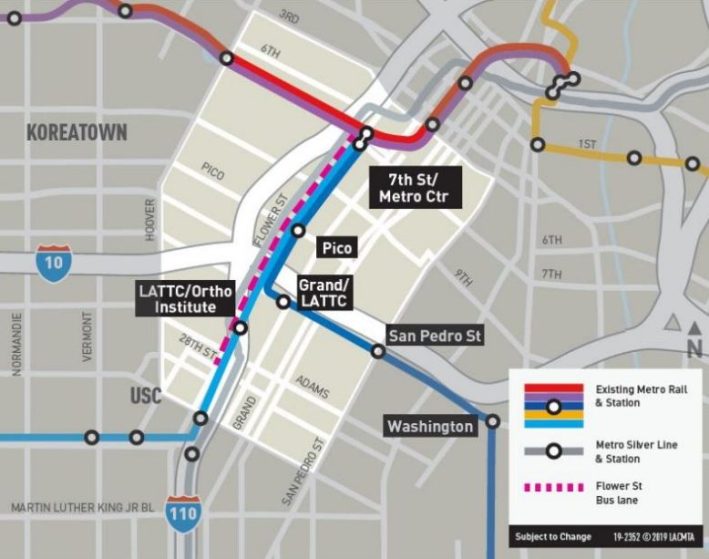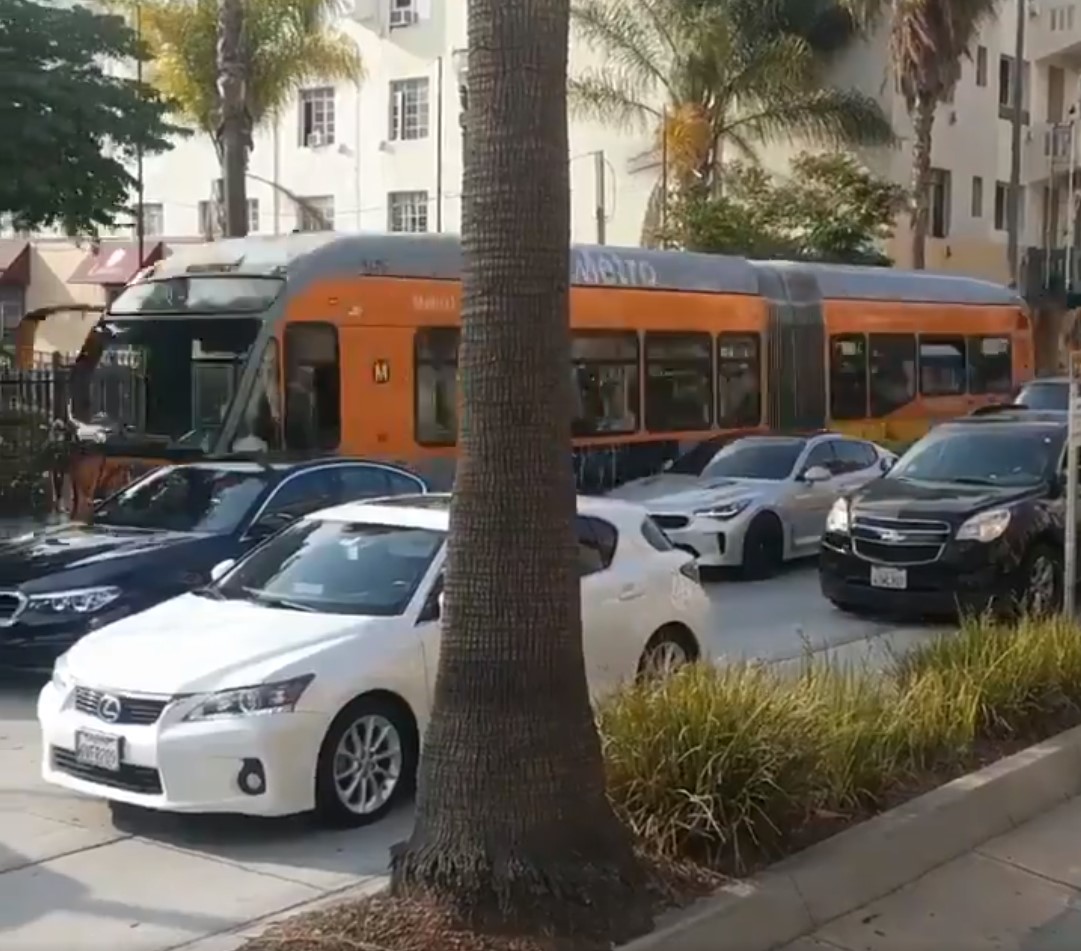
This morning the Metro board Operations Committee received a report on the status of the "New Blue" Blue Line rehabilitation project. Lessons learned from New Blue bus-only lane successes could improve bus speed elsewhere.
With New Blue construction underway, the northern half of the Blue Line is now closed and due to re-open in late September. Starting the day after tomorrow - Saturday, June 22 - the two northernmost Expo Line stations will also be closed. They are scheduled to re-open in late August. See Metro webpage for alternative shuttle bus service during these closures.

In support of temporary bus shuttle services during the closure, Metro worked with the city of L.A. to implement a peak-hour bus-only lane on Flower Street. The southbound Flower Street bus lane runs from 3-7 p.m. weekdays. It operates as a couplet with Figueroa Street's northbound bus lane. According to the Metro staff presentation, the Flower/Figueroa lanes have been assigned eight LAPD motorcycle officers. Metro Senior Executive Officer for Operations, Conan Cheung, stressed that law enforcement has been key to the success of these bus only lanes. Anecdotal observations and social media indicate that LAPD officers are not always giving citations to scofflaw drivers, but often helping to guide drivers away from impeding transit riders.
Metro is running "approximately 60 buses per hour" on the Flower bus lane; these include New Blue shuttles and existing Silver Line BRT, Metro, and Municipal bus service.
In what may be a promising sign, at one point Cheung described the new Flower Street bus lane as "temporary," but then corrected himself, calling it a "pilot." Some transit riders are already urging Metro and the city Transportation Department (LADOT) to make the bus lane permanent.
L.A. City Councilmember and Metro committee chair Mike Bonin was quick to suggest that lessons learned on Flower could be applied to the existing bus-only lanes on Wilshire Boulevard.
Wilshire Boulevard's peak-hour bus-only lanes have improved bus speeds, but have yet to live up to their full potential due to daily obstructions by scofflaw drivers.
Note that increased enforcement is not without issues. Black and Latino populations suffer when they are disproportionately targeted by law enforcement. Ideally Metro enforcement efforts should be preceded by community outreach efforts in order to warn drivers in advance. Metro could also do automated bus-lane enforcement, similar to San Francisco.
More bus lane enforcement is part of Metro’s Strategic Plan. Metro is planning several Bus Rapid Transit projects - from the North San Fernando Valley to Vermont Avenue to NoHo-Pasadena. These should all feature significant bus-only lane mileage, which some drivers perceive as a threat "taking away our lanes." At meetings just this week, disruptive Valley and Eagle Rock bus-only lane naysayers have shouted down Metro staff presenting bus lane proposals.
To speed up Metro buses, to retain ridership, to improve health, equity, and the environment, Metro is going to need good examples of successful bus-only lanes. Flower Street is one such success.







